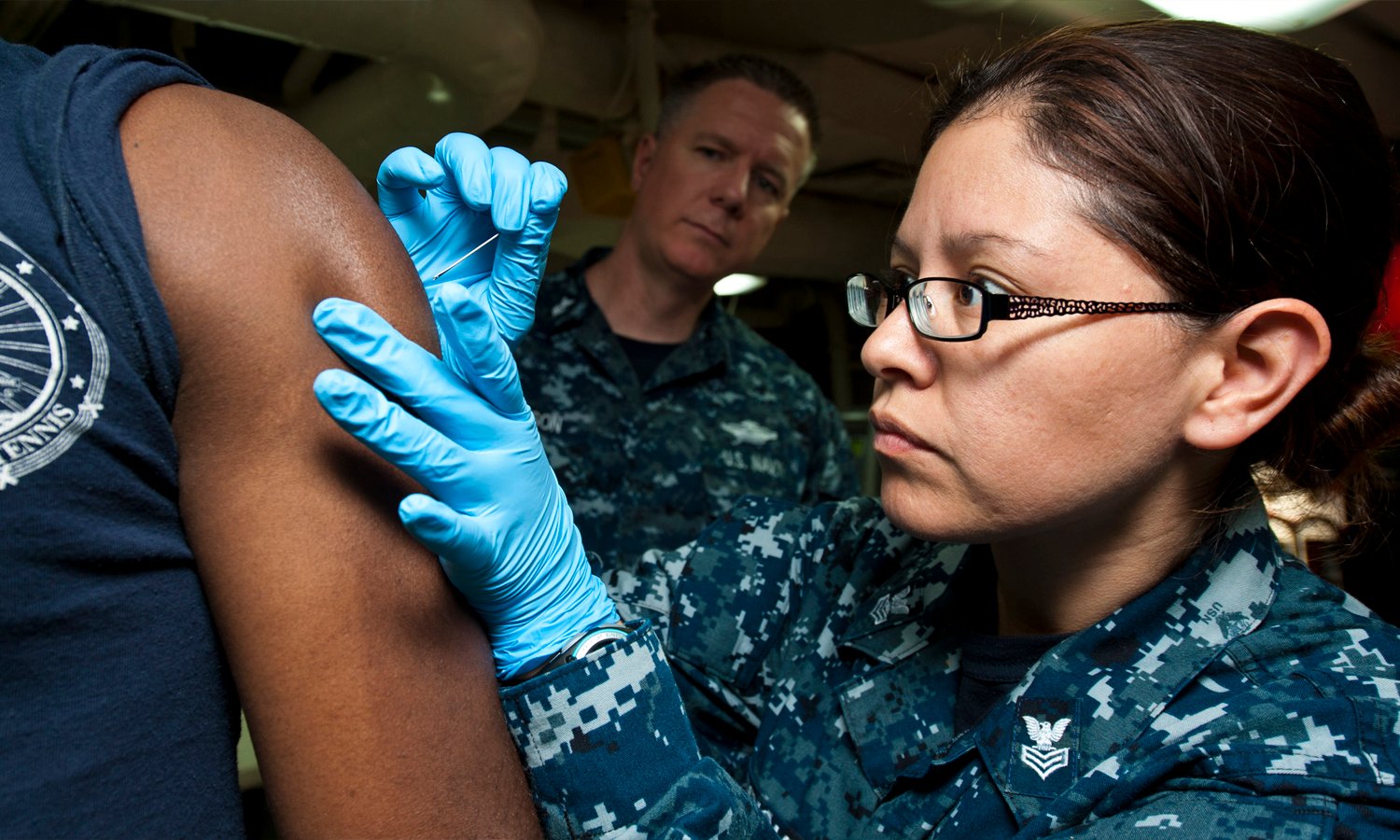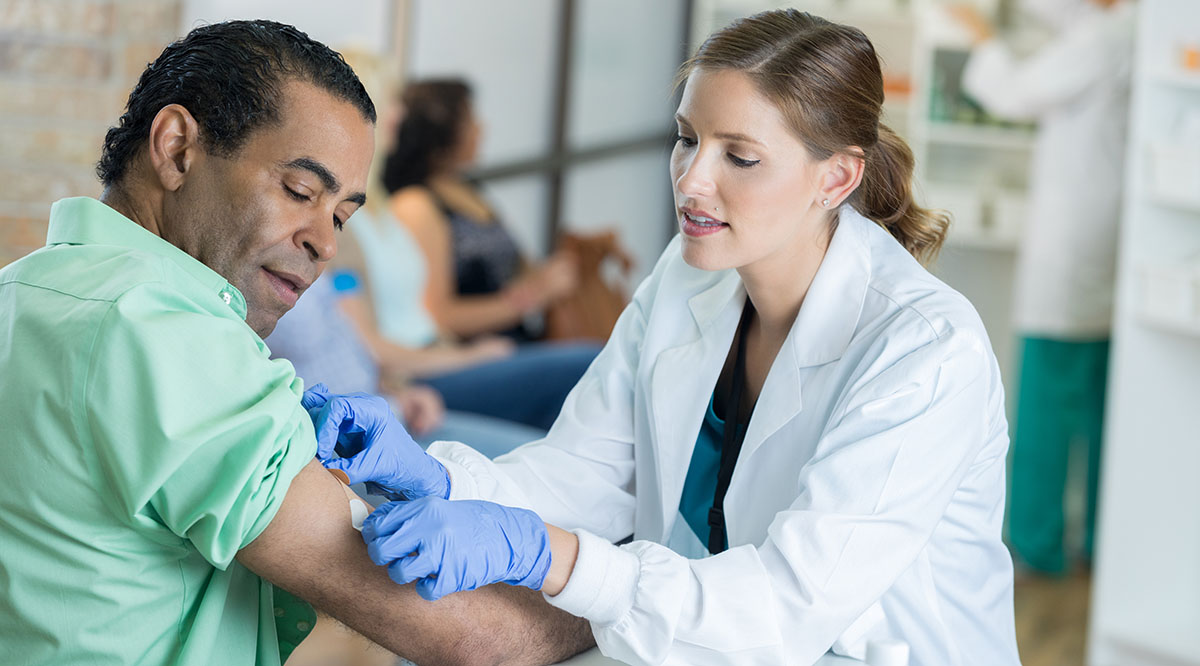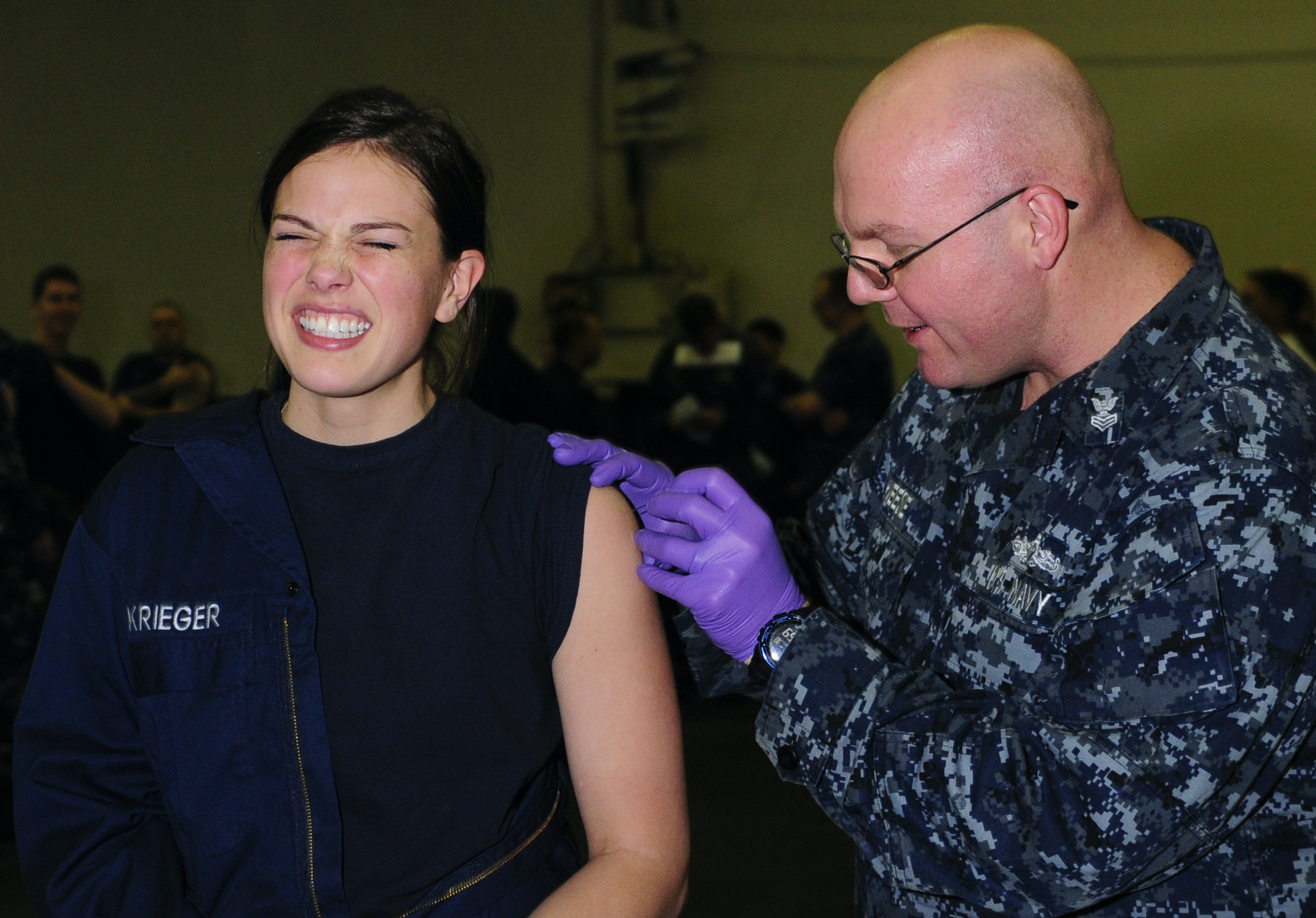Military Smallpox Vaccine - Staff Sgt. Travis Snyder receives a COVID vaccine at Joint Base Lewis-McChord Madigan Army Medical Center in Washington state in December 2020. Ted S. Warren / Associated Press 2020
Shortly before the new year, President Biden signed the new $858 billion National Defense Authorization Act. Despite the cost, the bill eliminated one of the most effective ways to protect our troops from harm: the mandatory COVID-19 mRNA vaccine. Republicans, especially House Minority Leader Kevin McCarthy of California, blocked the bill until it included a provision to eliminate military vaccination mandates. Among active duty members, 98% have been vaccinated against Covid Defense Secretary Lloyd Austin on August 24, 2021.
Military Smallpox Vaccine

In these party times, the military's authority over vaccines seems like a controversial issue. But history will say otherwise; Keeping soldiers safe through vaccination has been standard and effective military practice since the founding fathers.
Monkeypox Vaccine Considered, But Who Says Mass Immunization Not Needed Now
In 1775, the newly created Continental Army took part in the first major military offensive against the British, against the province of Quebec. Casualties, not from the battle, but from smallpox, crippled the daring attack as smallpox spread rapidly through the American camps. Eventually, the disease wiped out a third of General Benedict Arnold's troops.
Although Edward Jenner's discovery that the quapox vaccine could prevent smallpox was still decades away, by 1775 the dangerous practice of "mutation" against Cochin was widespread. In practice, small papules on the skin of small patients are injected into the recipient's skin or placed in the nose. Although most people tolerate it well, the difference sometimes leads to serious illness and death. Some in the general public oppose segregation, usually on religious grounds. Despite the dangers and opposition, General George Washington decided in 1777 to order the vaccination of the entire Continental Army. Smallpox rates quickly dropped by two-thirds.
During the American Civil War, at least two-thirds of the 660,000 deaths were due to infectious diseases, including diseases that are now vaccine-preventable. This sad event shocked me personally.
When I was a boy, my grandfather took me to the Indiana cemeteries where our ancestors were buried. I remember the terrible battle of Gettysburg and the tombstone of a great uncle who died of measles in the camp a few weeks later. His parents, poor farmers, raised the funds to embalm his body and send it home by train for burial. These tragic experiences inspired me to pursue a career in infectious diseases and serve in the military.
Monkeypox Vaccines Arrive In Hampton Roads
The 1918-19 pandemic caused the devastating impact of influenza on the US military (nearly 9 million lost work days, between 20% and 40% of Army and Navy personnel became ill, over 200,000 men were hospitalized, and 45,000 died). the military to focus its resources on developing a flu vaccine. After decades of effort, an effective flu vaccine was finally introduced in the final days of World War II.
Influenza, measles and, until 1990, smallpox are just three of the many vaccines mandated by the US military to ensure readiness for all officers and personnel. Others - adenovirus, hepatitis A, hepatitis B, mumps, rubella, meningococcal, poliovirus, tetanus - diphtheria, varicella - are also necessary. Others—anthrax, Haemophilus influenzae type B, Japanese encephalitis, pneumococcal, rabies, smallpox, typhoid fever—may be necessary depending on the job.
Only two required vaccines have caused significant hypersensitivity in some service members: the anthrax and the COVID-19 mRNA vaccines.

After the first Persian Gulf War in 1991, the Iraqi government claimed to have reliable information that it had several laboratory strains of Bacillus anthracis in its possession. The anthrax vaccine that we were ordered to receive in the military was developed in the 1950s.
Vaccine Tracker: When And Where To Get All Your Vaccinations
Open Forum and Insights guest comments are made by writers with expertise, personal experiences, or original insights on a topic of interest to our readers. Their opinions do not necessarily reflect those of the Chronicle editorial board, which is committed to providing our readers with a diversity of opinions. Read more about our transparency and ethics policies
The anthrax vaccine was safe and generally associated with only mild local reactions. Fewer than 1 in 100,000 people who received the anthrax vaccine had serious adverse events. With the spread of misinformation related to the COVID-19 vaccine, rumors of long-term side effects abounded. As the only USAF flight surgeon trained in infectious diseases, I was ordered to visit the base to talk to the airmen about the safety and effectiveness of the anthrax vaccine and to encourage compliance.
Since 2020, COVID-19 has killed more than 1 million Americans. Two mRNA vaccines have been available since 2020, originally under the FDA's emergency use authorization process. These vaccines are safe and, despite the emergence of new strains, very effective in preventing serious illness, hospitalization and death. It is estimated that the COVID-19 vaccine has saved the lives of 3 million Americans.
Unfortunately, CoVID-19 mRNA vaccine mandates have become politicized and these vaccines have been repeatedly attacked by disinformation campaigns. The fact that some members of Congress held the National Defense Authorization Act hostage to vaccination requirements was an outrageous act. This unfortunate precedent may overturn 250 years of policy and tradition, indicating that immunity is an important part of maintaining and training a military force.
Why Do We Get Shots In The Arm? It's All About The Muscle
Referring to General Washington's decision of 1777, I remarked that we would not be a country today if we had not kept our revolutionary army alive by immunity. Infectious risks have not disappeared, as COVID-19 has rudely reminded us. There is also no military threat to our security. Now is not the time to roll back the policies that helped birth our nation.
Dean L. Winslow is a professor of medicine at Stanford University and a retired USAF colonel who served six deployments after 9/11 as a flight surgeon in support of combat operations in Afghanistan and Iraq. Scientists have developed a smallpox vaccine using a live variant of the virus called vaccinia. The vaccine does not cause smallpox, but it is very similar to the variola virus.
, doctors stopped inoculating smallpox in the United States, except for people at risk of infection - for example, in the laboratory.

The measles vaccine left a scar at the injection site. Read on to learn more about smallpox vaccine scarring.
Army Covid 19 Vaccine Requirements: Active Duty Deadline Dec. 15
The scar may be round or oblong, and may appear deeper than the surrounding skin. Usually, the scar is smaller than the diameter of a pencil eraser, although it can be larger.
In some people, smallpox vaccine scars are itchy or uncomfortable. This is part of the body's normal response to injury.
A scar forms in response to an injury, such as a smallpox vaccine puncture. As the body repairs the damage, it creates scar tissue.
In most people, this scar tissue is small. However, some people have an inflammatory response to the vaccine injection, which can cause a large, raised scar.
Shots In Arms: How To Get More Military Servicemembers Vaccinated
Other vaccines usually inject liquid with thin needles. However, the smallpox vaccine requires a different injection method.
When giving this type of vaccine, the health care provider inserts a double-edged needle—or double needle—into the vaccine liquid, and then inserts the needle into the person's arm.
The body's immune system reacts to the live virus at the time of vaccination, creating a defense that expels the virus. It is this reaction that causes the injury.

As the body fights the infection, a scab begins to form. The rash may feel itchy and itchy. This is a normal reaction to irritation.
Vaccines: A Public Health Success Story > Joint Base San Antonio > News
As the wound at the injection site heals, the incision falls away and leaves an area of skin.
Usually, a person receives the smallpox vaccine in the upper left arm, although doctors sometimes give the vaccine in other areas, such as the armpit.
However, no one has gotten smallpox from the vaccine because the vaccine contains a different virus.
Unlike other vaccines, the smallpox vaccine contains a live virus. This means that people receiving the vaccine need to take extra care of the injection sites to avoid spreading the virus.
Smallpox Vaccine Scar: Pictures, Causes, And More
In the middle of the 20th century, a mass vaccination campaign eradicated smallpox. As a result, smallpox vaccination is not a routine practice in the United States.
Generally, only people at risk of exposure, such as those who work in laboratories with the virus, receive the childhood vaccine.
People who receive this vaccine may experience some itching at the injection site, as well as itching and eventually scarring. These are normal features of the healing process.

Today's medical news has strict source guidelines and comes only from peer-reviewed studies, academic research institutions, and medical journals and associations. We avoid using third-party referrals. We link to primary sources - including studies, scientific references and statistics - in each article and also list them in the sources section at the end of our articles. You can learn more about how we ensure our content is accurate and up-to-date by reading our editorial policy. A plane gives him the vaccine
Post A Comment:
0 comments so far,add yours